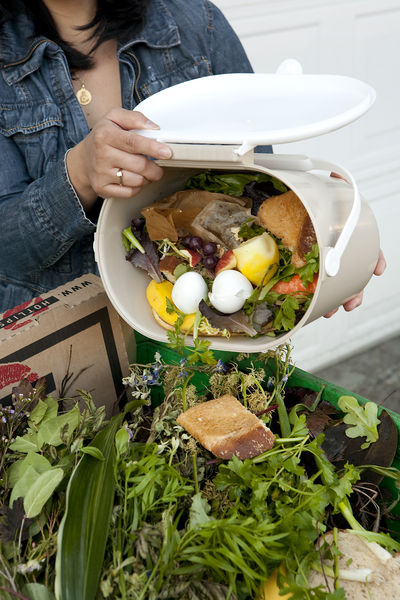FOOD WASTE: From The Ground Up: How Cities and States Can Be Leaders in Food Waste Reduction
In 2015, the U.S. Department of Agriculture and Environmental Protection Agency announced an ambitious goal of reducing food waste in the United States by 50% by 2030. While the change in presidential administrations presents new obstacles for many federal environmental initiatives, reducing food waste continues to offer fertile ground for cooperation. In large part, this is because cities and states—not the federal government—are best positioned to divert food from landfills.
Recent surveys suggest that each year, between 30 and 40% of the food we grow in the United States goes to waste. This has enormous resource impacts: 25% of freshwater, 31% of cropland, and 30% of the fertilizer applied to crops in the United States are used to grow food that is never eaten. Meanwhile, food rotting in landfills contributes to climate change by emitting methane, a greenhouse gas that has a 25 times greater impact on climate change per ton than carbon dioxide.
In principle, no one supports throwing food away. Most would prefer to feed hungry Americans. Yet, the United States ranks among the largest producers of food waste in the world on a per capita basis. The average American throws away 20 pounds of food per month, an estimated 95% of which ends up in landfills.
USDA and EPA took an important first step toward highlighting food waste as both a food security and an environmental issue by articulating the goal of halving food waste by 2030. In practice, though, the federal government plays only a supporting role in food waste reduction.
 |
|
Photo by Tim Jewett |
The policy areas that pertain most directly to food waste—including solid waste management, as well as zoning and permitting for recycling facilities—rest squarely in the hands of municipal or state governments. These jurisdictions likewise play an important role in helping citizens understand and comply with federal and state regulations.
Given the importance of cities and states, this blog post will be the first in a series on local and regional strategies for food waste reduction. Subsequent posts will explore strategies for these jurisdictions to apply the “3 Rs”: reduce wasted food at the source; re-use extra edible food by donating it; and recycle food waste through composting or anaerobic digestion.
This series will likewise discuss ongoing city- and state level food waste reduction efforts such as the Nashville Food Waste Initiative, a project led by the Natural Resources Defense Council with support from the Environmental Law Institute. Finally, this series will highlight resources such as the Roadmap to Reduce U.S. Food Waste by 20%, a report released in early 2016 by ReFED, “a collaboration of over 30 business, nonprofit, foundation, and government leaders committed to reducing food waste in the United States.”
Altogether, food waste has only recently garnered attention as a major environmental issue, and so legal and policy approaches are just beginning to sprout. As this series will show, however, there is promising evidence that successful food waste policy grows, like food itself, from the ground up.
Carol, Linda, and Emmett work on the Food Waste Initiative at ELI. Other blogs in the ELI food waste series can be found here.


